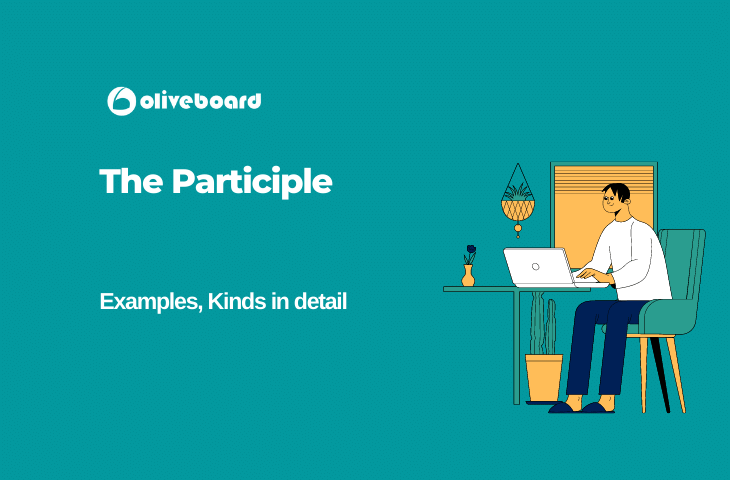You have heard of the participle before, but what does it mean? And how are you supposed to use it? Participles are what make the verbs irregular. A participle is a kind of word derived from a verb and is used for various purposes, be it to contest the verb tenses or as an adjective. Participles are believed to be a different part of speech than verbs, but these resemble the verbs they belong to. For example, if you talk of the verb walk, you can turn it to a participle as walked or walking. These two words may look identical to the past and present tense of the word walk. So yes, participles do resemble the verbs a lot, but they do tasks way more than what a verb does. The participle also assists the verbs in expressing complicated actions.
Examples Of Participles
Here are some participles that are used in sentences.
She had a bag that was covered in stickers
There were many hidden chocolates in the room.
Kinds Of Participles
There are two primary kinds of participles: the present and past participle. There is a third type of participle, the perfect participle, a combination of one particular present and past participle.
Past participles
The past participles can be tricky depending on which verb you are dealing with. If it is a regular verb, then the past participle is formed by adding an –ed to the end of the root form of the verb. So the past particle of the work kick is kicked. Even when you use the regular verbs, there are some exceptions here. Irregular verbs, however, do not follow this rule, so the past participle of the word eat is eaten. So what do you use the past participles for? Here are the three main uses of the past participles.
The past participle can be used as an adjective to modify the noun or a noun equivalent.
The participle phrase is a long adjectival phrase that uses the participle and other parts of speech to modify the noun.
The past participle is used to form the six perfect verb tenses. These are the present perfect tense, past perfect tense, future perfect tense, present perfect continuous tense, past perfect continuous tense and future perfect continuous tense.
Present participles
The present participle is easy to handle as compared to the past participle. To form a present participle to a verb, you need to add an ing to the verb root form. For example, if the verb is – show, its present principle is showing. Even the irregular verbs follow this rule of present participles. Like for example, the verb be has a present participle being.
You can use the present participle as an adjective to modify the noun.
You can use the present participle as a participle phrase
Like in the case of the past participle, you can use the present participle to form six varied verb tenses. These are present continuous, past continuous, future continuous, present perfect continuous, past perfect continuous and future perfect continuous.
Perfect participles
The perfect participle is not necessarily a unique third type of a participle. Still, it is more of a grammatical phrase formed when you combine the word with a past participle. The perfect participle is used to indicate that one event occurred before another. Often we use perfect participles to indicate that one action ended immediately before the other started. Like having finished his job, Joseph went out to play football.
Participle phrase
The participle phrase is an adjectival phrase that includes the participle, past, present or perfect participle and another part of speech like adjective, noun, adverb or a prepositional phrase. Like in the case of an adjective, the participle phrase is used to modify the noun and the noun equivalent.
The participle phrase is placed close to the noun, which it is modifying and which helps in avoiding confusion.
She was looking for a boy wearing a red hat.
You can use the participle phrase also at the start of the sentence. When it is done this way, these are separated with a comma from the main sentence. You should pace the modified noun close to the participle phrase to avoid confusion.
Dangling participle
The dangling participle is a participle or a participle phrase that either modifies the wrong noun or the noun missing from the sentence. Using dangling participle is a mistake you should avoid by packing the noun close to the participle or to the participle phrase, which it is modifying. You should check the sentence to ensure that you do not accidentally create a dangling participle.
Conclusion
A participle is thus a verb form that you can use as an adjective or combine with a verb to be to construct varied verb tenses.
FAQ
The present participle is all the words that end with an ing. If the base form of the verb ends in a consonant, then you have to add ing to it. Like think is thinking and walk is walking. If the verb ends with a silent e, you drop e and replace it with ing.
A past participle is a form of the participle formed when you add ed to the base form of the verb. Like for example, walk becomes walked, and move becomes moved and so on. There are, however, some irregular past participles like do becomes does and think becomes thought.
When the participle in the present form combines with the verb to be then it forms certain verb tenses. The past participle combines with to be to form the passive voice.
